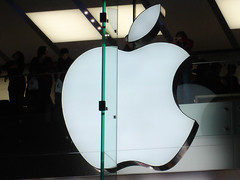A BROWSER MANIFESTO – PART 15
I’ve made the argument that game developers should build tools that allow them to support all platforms and screens from the same R&D thrust. Among these platforms the open browser is the most critical because it is the one that is not controlled by a giant corporation with a profit motive.
It is always tempting to align with the titans because they are big, powerful, influential and know how to market themselves and their business propositions. But historically, closed platforms don’t work any better for game developers than the Berlin Wall. Prior to Nintendo there were many open media platforms including print, painting, photography, film, video, music. While Philips invented the CD player they widely licensed their patents and charged a mere 6 cents per disc, and allowed complete freedom of operations and expression. More recently, the World Wide Web was a gift to the public and we’ve seen again how a free, open, competitive platform can flourish. But Nintendo ushered in a new generation of closed platforms with unappealing license terms for third-parties. It has always been great for Nintendo, but there isn’t a single great game software company today that was built on the back of Nintendo. In general, these licenses in the console industry drove up costs, crippled innovation and despite industry growth more than 90% of publishers that bore these costs were wiped out.
Rather than operating like the web or CD, Nintendo has been the reference point for many new closed platforms. Digital licenses have gotten even worse because the licensors all reserve the right to constantly make unilateral changes, thereby creating a slippery slope for third-party game developers who are at the end of the whip. Hot new digital platforms with high growth have been as alluring as the Pied Piper, promising developers liberation from publishers and retailers and a chance to be first-movers. Thousands of developers followed because it seemed reasonable at the time. Apple, for example seemed generous initially to be raking only 30% of the pot, because Western mobile carriers had been taking 50-75%. But not enough science or even study of history went into the choice of 30% that has become a de facto standard. The mobile carriers had failed, so that was not a good reference point. DoCoMo succeeded by charging only 9%. Other huge platform successes like the CD and the web were essentially free. Where is the analysis or evidence that a 30% fee is viable for a third-party industry? There isn’t any. Instead we have many examples to the contrary.
Consider that for games, it will cost up to 30% of revenue for the cost of acquisition (also known as advertising, even after averaging this cost down to eCPA as a result of other free traffic sources). Sales or VAT tax can be another 10% or more. Server overhead to operate free client-server games can also be 10% or more. If there is a 30% platform fee a game developer is now looking at variable costs eating up 80% or more of revenue, and they still have to cover product development and overhead costs. From what I can tell from published industry stats, on many platforms these other costs are 50% or more of revenue so now we’re at 130% for a median performing app. Given a bell curve distribution and 200,000 apps you’ll still have outliers like Angry Birds and Millionaire City but overall this is not a healthy economic picture for game developers.
Many other companies have simply copied the 30% rate from Apple, justifying it on the simple argument that Apple had set the standard. Well, I guarantee you that Steve Jobs did not envision the cost structure and business model of today’s games and arrive at the 30% number based on a clear understanding of a win-win scenario that would create a healthy value system for game developers. Steve Jobs may have been a genius but he never liked the game industry and he never understood it, nor did he care about the needs of game developers. While we’re currently stuck with the number he made up, there are signs of increasing platform competition as Windows 8 will charge a reduced rate of 20% and Google+ launched at only a 5% fee. But history has shown that as developers invest and help platform owners become strong, the rates go up.
Game developers need to wake up now and realize that they have too often been willing serfs in feudal kingdoms where they don’t own the soil that they till. The open browser is the next big game platform. But even if it wasn’t, it is the one, only and best place for a developer to plant their flag and invest in their future. Because it is open and free! Being strong in the browser will create even more synergy if you are also extending your reach with Facebook, Apple, Android and other platforms that you can branch to from the browser. We can even tolerate their 30% tariffs if our technology leverages product investments to reach all screens and to provide more sources of free traffic. But freedom for game developers must come first. If we are free, we can consider a flanking move on a closed platform from a position of strength and we can negotiate with some bargaining power, perhaps even with a collective viewpoint.
There have been other freedom fights in game industry history and we’ve had our William Wallaces. Activision’s founders were sued by their former bosses at Atari but their bid for independence survived. Tengen challenged Nintendo but suffered a fatal loss. I founded Electronic Arts to create a better business model for game developers. The most important single thing I did at EA was to push my team to reverse-engineer the Sega Genesis so that EA could be liberated from the draconian license agreements that were offered in those days. I founded 3DO as a bold attempt to help developers and improve the value chain, but 3DO was outflanked by Sony’s deeper pockets. 3DO reduced industry standard console license fees by 70% but Sony put them right back where they had been. More than 900 companies signed 3DO licenses but they fled to Sony when Sony proved willing to take big losses to build their hardware installed base. Sony executives did tell me later that they copied many business practices and licensing philosophies from 3DO, which made things better for developers. With Steampowered.com, Valve pioneered digital distribution at a time when none of the PC game publishers would touch it. Bigpoint and GameForge pioneered browser games when the mainstream didn’t care. In every one of these cases, game developers took risks and ventured into unknown territory for the betterment of game developers and the public. The courage of a few did help grow an industry that can now support a vastly larger number of global game developers. Today, the open browser gives all game developers a chance to be courageous and help the industry reach for a new age that could be truly golden for game developers, not just for Apple, Facebook and Zynga.
The browser is worth fighting for. We need to be free. We are all William Wallaces. Let’s follow our hearts.































